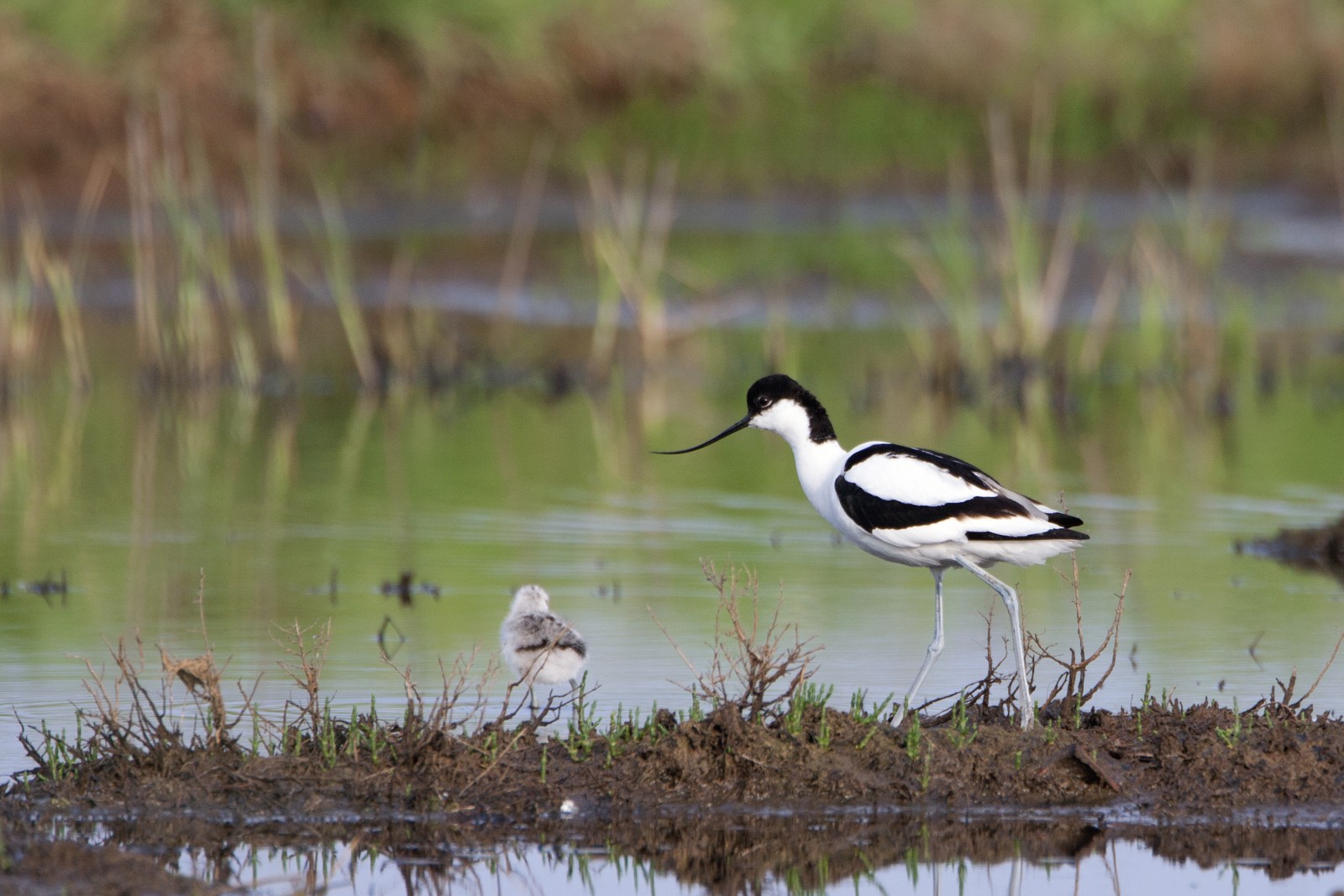Description
De Petten is a fairly small lagoon with a couple of artificial islands, covered with shells, and surrounding pastures. The area is used as a breeding area for many shorebird species, like Common Tern, Arctic Tern, Avocet, Common Redshank, Common Gull and Black-headed Gull. From the road, you'll have a very good overview of the lagoon and you can scan the area for foraging waders, like Ruddy Turnstone, Dunlin, Common Ringed Plover and many more species. Sometimes, small numbers of Eurasian Spoonbill can be present, foraging for prey in the brackish waters. Waterfowl is also present, like good numbers of Common Shelduck and Northern Shoveler. Greylag Goose can breed in the area, and sometimes in large numbers.
Just behind the De Petten, a smaller lagoon is present, called 't Stoar. The species are similar to the first lagoon, but can be dificult to observe due to the landscape. Here, species bound to the surrounding pastures come to roost, like Black-tailed Godwit and Common Redshank. Surrounding this area, reedbeds are present. Here, Western Marsh Harrier breeds and can often be seen.
For many years, De Petten was home to the only breeding colony of Sandwich Tern, but since about 2013 the numbers declined in the area and increased in other similar habitats on the eastern side of Texel.
During high tide, the area is used by very large numbers of waders. Numbers can go up to thousands of individuals of many species, like Bar-tailed Godwit, Red Knot, Dunlin and Eurasian Curlew. Smaller numbers of Whimbrel, Spotted Redshank and Ruff can be present too. When a predator is nearby, like a Peregrine Falcon or Western Marsh Harrier, all birds will fly up and cause a very impressive sight.
The surrounding pastures are ideal for breeding birds, like Black-tailed Godwit and Common Redshank. Also Western Yellow Wagtail can be seen in larger numbers. In winter, these pastures are often used by large flocks of geese, like Brent Goose and Barnacle Goose. Sometimes, the scarcer subspecies of Brent Goose can be present, being White-Bellied Brent (B. b. hrota) or Black Brent (B. b. nigricans).
_________________________
Nederlands: De Petten is een vrij kleine lagune net achter de dijk met een paar kunstmatige eilanden bedekt met schelpen, en omringende weilanden. Het gebied wordt gebruikt als broedgebied voor vele soorten kustvogels, zoals Common Tern, Arctic Tern, Avocet, Common Redshank, Common Gull en Black-headed Gull. Vanaf de weg heb je een heel goed overzicht over de lagune en kun je het gebied scannen op foeragerende steltlopers, zoals Ruddy Turnstone, Dunlin, Common Ringed Plover en nog veel meer soorten. Soms zijn er kleine aantallen Eurasian Spoonbill aanwezig, die in de brakke wateren foerageren. Watervogels zijn ook aanwezig, zoals grote aantallen Common Shelduck en Northern Shoveler. Greylag Goose kan in het gebied broeden, en soms in grote aantallen.
Net achter De Petten is een kleinere lagune aanwezig, genaamd 't Stoar. Hier komen soorten rusten die gebonden zijn aan de omliggende weilanden, zoals Black-tailed Godwit en Common Redshank maar de vogels kunnen door het landschap soms moeilijk te zien zijn. Rondom dit gebied liggen rietvelden. Hier broedt Western Marsh Harrier en die is vaak goed te zien.
Gedurende vele jaren was De Petten de enige broedkolonie van Sandwich Tern, maar sinds ongeveer 2013 namen de aantallen in het gebied af en namen toe in andere vergelijkbare leefgebieden aan de oostkant van Texel.
Bij vloed wordt het gebied door grote aantallen steltlopers gebruikt. Het aantal kan oplopen tot duizenden individuen van vele soorten, zoals Bar-tailed Godwit, Red Knot, Dunlin en Eurasian Curlew. Kleinere aantallen Whimbrel, Spotted Redshank en Ruff kunnen ook aanwezig zijn. Als er een roofdier in de buurt is, zoals een Peregrine Falcon of Western Marsh Harrier, vliegen alle vogels omhoog en zorgen dat is vaak een indrukwekkend gezicht.
De omliggende weilanden zijn ideaal voor broedvogels, zoals Black-tailed Godwit en Common Redshank. Ook Western Yellow Wagtail is in grotere aantallen te zien. In de winter worden deze weiden vaak gebruikt door grote zwermen ganzen, zoals Brent Goose en Barnacle Goose. Soms kan de schaarsere ondersoort van Brent Goose aanwezig zijn, namelijk Witbuikrotgans (B. b. hrota) of Zwarte Rotgans (B. b. nigricans).
Details
Access
The area is easy accessible. You can park your car next to the road and observe the breeding birds from a fairly close distance. The area can be pretty busy with other birders, parking their car next to the road.
_________________________
Nederlands: Het gebied is gemakkelijk bereikbaar. Je kunt langs de weg parkeren en de broedvogels van vrij dichtbij bekijken. Het gebied kan behoorlijk druk zijn met andere vogelaars, die hun auto langs de weg parkeren.


